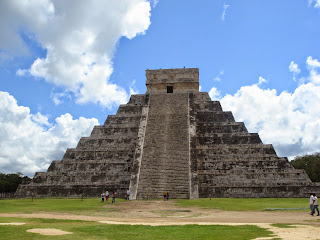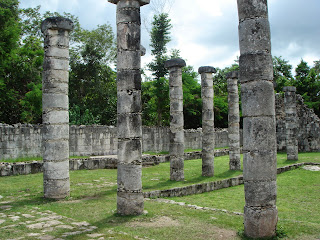Last night when we returned to the hotel, the extra mattress promised by the hotel people was not in the room. When I tried to switch on the table lamp, I found that the light bulb was broken, neither the radio nor the T.V. were working. So Alex went down and asked them to please bring the mattress and replace the light bulb and fix the radio and the T.V. After some delay the student/worker came up with a rubber mattress, a bed sheet and a pillow and put it down on the floor. He told us that they did not have a spare light bulb to replace the broken one, and every thing will be fixed on the morrow, as it was late and no electrician would come that far from the city. When I asked him, he confessed that he was not a university student but working as an all job man, also sleeping on the floor until the place was refurbished.
The night some how passed, when I awoke early in the morning, the sun light was streaming in through the window, the curtains were thin and transparent and soon the room was hot.
The View from the window
We got up and got ready. From the kitchen below they brought us a tray of fresh fruit and orange juice, toast & marmalade and coffee and as you can see from the photos, it was a nice breakfast, which refreshed us.
A breakfast for two
The Sun over troubled water
Cancún is divided in two parts, La Ciudad Cancún and La Zona Hotelera. We had found this to be in Tulum too, zona hotelera exclusively for the tourists. Although by Mexican law, as it is in Spain also, all people have the right of access to the beach, to walk and swim. However we had seen the day before that this will not be possible, all the resorts in this area were patrolled by security guards, who would not even permit us to go near and talk to them. There was no access to the beach. So we decided to go to the city (La Ciudad Cancún), have a look at the local fruit and vegetable markets and afterwards, take a bus and visit the various beaches which lie on that side.
So we took the bus which dropped us at the main bus station where we had arrived. From there we walked downtown (El Centro), the Avenida Tulum which is a wide street, full of shops, restaurants and banks. Alex changed some Euros for Mexican Pesos and we had a cup of coffee at 7/11, the American chain of mini stores and we window shopped but there was really nothing of interest to buy. Same brands of clothes and shoes, thanks to globalisation, have invaded all the countries and I personally get sick to see Starbucks, McDonald and KFC infesting even South East Asian countries. It is alright that these companies operate in the north and south American markets, but super malls and hyper markets owned and run mostly by U.S.A companies is intolerable. That is my view.
After walking more than a kilometre, we reached the municipal market 28. Outside the market were vendors with carts, selling fresh orange and coconut juice and and cold "Chaya" flavoured water.I was told that was a nutritious plant which is used in preparing many other recipes. Alex had a glass of fresh coconut juice and I had Chaya flavoured water. To tell the truth, it tasted like ginseng.
Although it was noon, the place was full with diners at various restaurants there. I looked at the menu of three restaurants, at the plates of food on the tables of diners, to see what the favourite dish was. The traditional dish of Pescado a la Tikin-Xic, fish marinated with annatto(a common yellow food colouring, which is a substitute for saffron and gives a rich colour to the food), sour oranges, peppers, tomatoes, red onions, and spices, seemed to be the popular dish. This fish is grilled over charcoal, wrapped in banana leaf, and soaked in beer and olive oil. And served with a side dish of vegetables.The price was 120 pesos.
On the menus were also the typical cuisine from Yucatan, "Relleno negro( a dark mole paste made from many spices, to prepare chicken, pork or turkey) and "Cochinita Pibil" , a recipe consisting of pork prepared with annatto and sour orange, sliced and accompanied by red onions and black beans, eaten with corn tortilla or tacos.
We chose a small family run restaurant , which was full of locals, and had to wait about fifteen minutes for a table to be free. Alex ordered Pescado a la Tikin-Xic, and I chose a bowl of Sopa de Lima, a very tasty and light chicken broth, served with shredded chicken, deep fried tortilla chips, and Mexican lime juice and a plate of grilled shrimps with yellow rice, vegetables and onion salad. I tasted a little of the fish and found it quite heavy, as if it had been cooked with butter. But it was fresh, firm and looked very good sitting on the plate. Alex enjoyed it.
It was late afternoon when we finished and walked back to the bus station. Since we could not decide whether to head for the beaches or finish visiting the shopping centre in Zona Hotelera, we decided on the latter and took another bus to go there. As we had suspected, the whole area was nothing but hotels, shopping malls, fast food and big name business. During the two days we had seen nothing of any tourists anywhere and it was the same in this vast area dedicated to shoppers. Almost all the places were empty, low season or the threat of violence in the north, which at that time had the whole country in the grip of fear, had done much harm to the economy of Mexico and we could feel it in Cancún too.
In the evening when we returned to the hotel, the light bulb had been changed in the room but the T.V. set had not been fixed. I did not fancy the idea of another night sleeping on the floor either.We decided to go to the Isla Mujeres next day.













































